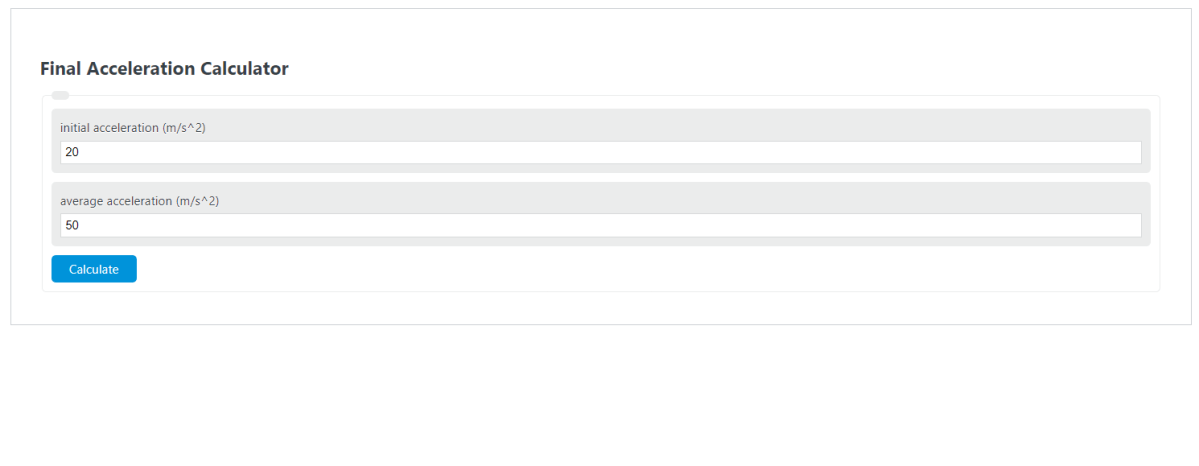Enter the initial acceleration and the average acceleration into the calculator to determine the Final Acceleration.
- All Acceleration Calculators
- Initial Acceleration Calculator
- Position and Velocity to Acceleration Calculator
- Theoretical Acceleration Calculator
Final Acceleration Formula
The following equation is used to calculate the Final Acceleration.
Af = 2*AA + Ai
- Where Af is the Final Acceleration (m/s^2)
- Ai is the initial acceleration (m/s^2)
- AA is the average acceleration (m/s^2)
To calculate the final acceleration, multiply the average acceleration by 2, then add the initial acceleration.
What are the units for Final Acceleration?
The most common units for Final Acceleration are m/s^2.
How to Calculate Final Acceleration?
Example Problem:
The following example problem outlines the steps and information required to calculate the Final Acceleration.
First, determine the initial acceleration. In this example, the initial acceleration is measured to be 20 (m/s^2).
Next, determine the average acceleration. For this problem, the average acceleration is calculated to be 50 (m/s^2).
Finally, calculate the Final Acceleration using the formula above:
Af = 2*AA + Ai
Inserting the values from above and solving the equation gives us:
Af = 2*50 + 20 = 120 (m/s^2)
FAQ
What is the difference between initial acceleration and final acceleration?
Initial acceleration refers to the acceleration of an object at the beginning of a time interval, while final acceleration is the acceleration of the object at the end of that interval. The change in acceleration can be due to various factors, such as changes in force applied to the object or changes in the object’s mass.
Can final acceleration be negative?
Yes, final acceleration can be negative. Negative acceleration, often referred to as deceleration, indicates that the object is slowing down. The sign of the acceleration depends on the direction of the velocity change relative to the chosen coordinate system.
How does average acceleration relate to initial and final acceleration?
Average acceleration is calculated over a specific time interval and is defined as the change in velocity divided by the time taken for that change. It essentially provides a mean rate of change of velocity over that period. If you know the initial and final accelerations, the average acceleration can be considered as a value that represents the overall acceleration trend between these two points.
